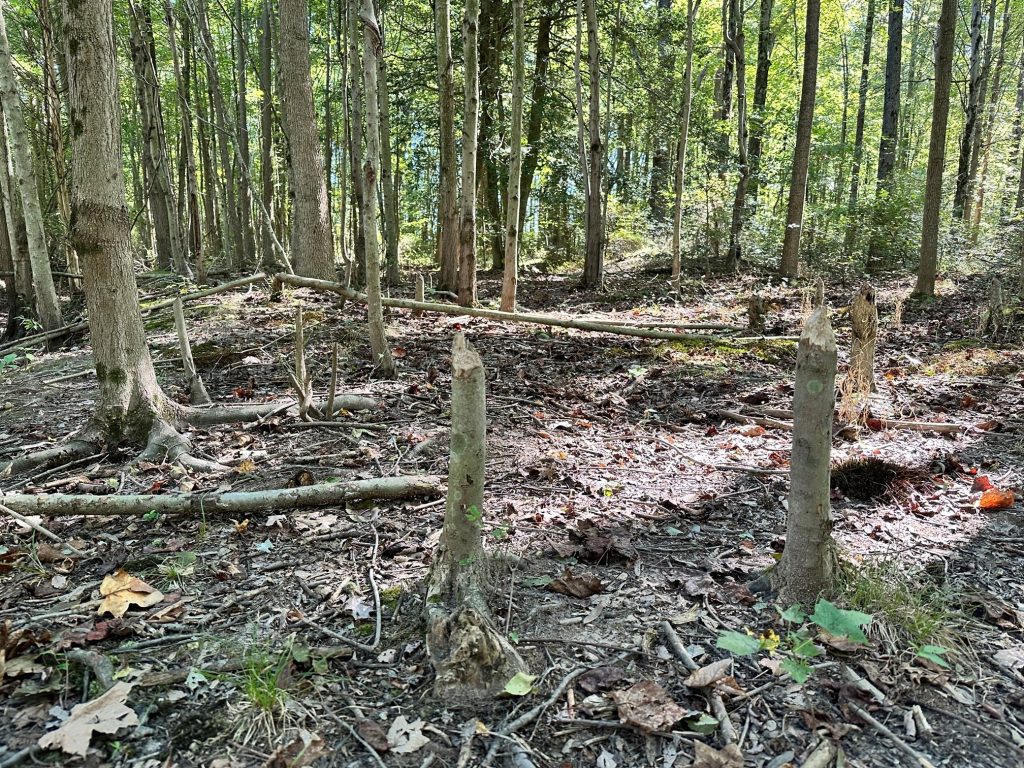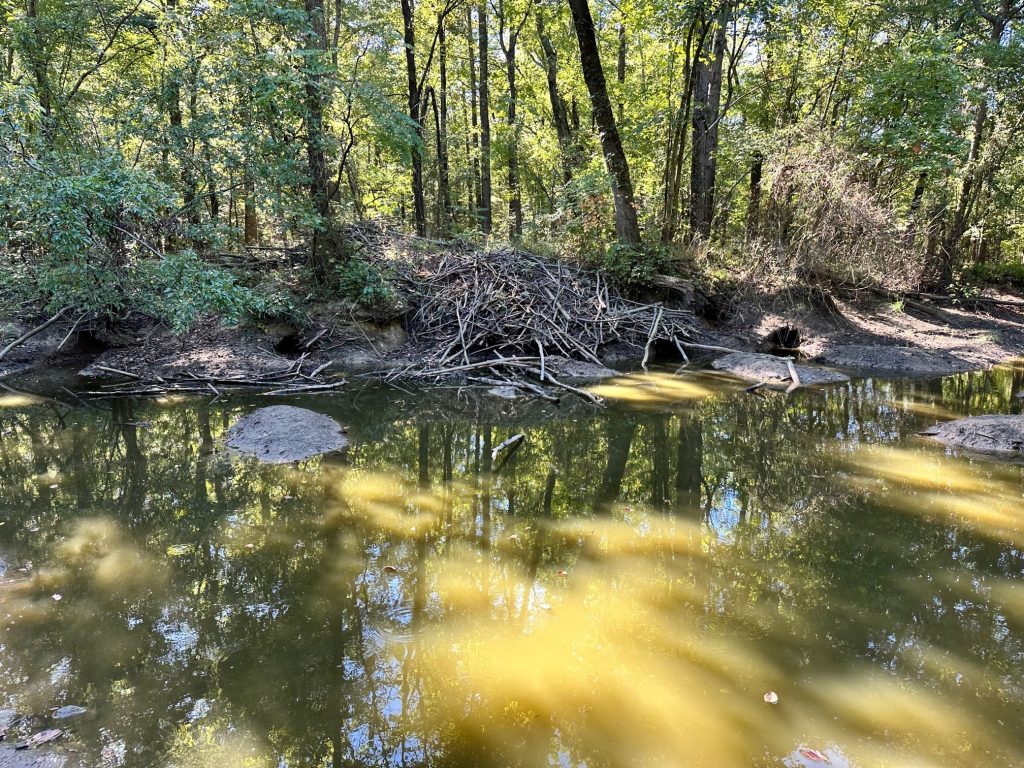
Facebook Twitter Instagram YouTube RSS Feed
Written on: December 19th, 2022 in Wetland Animals, Wetland Assessments
By Brittney Flatten, DNREC’s Watershed Assessment and Management Section
For the past year, I’ve been working with another DNREC scientist to document submerged aquatic vegetation (SAV) in Delaware’s streams, ponds, and bays to get a better understanding of where these plants like to grow and how we can protect them. I had previously observed some SAV in a nearby stream while doing a wetland assessment in Blackiston Wildlife Area and we decided to check it out. When we arrived, however, we were surprised to find that the stream barely had any water! Though the summer of 2022 was dry, the lack of rain didn’t fully explain what happened. So, we walked around for a few minutes to find more clues. We saw a lot of downed trees, but they hadn’t been cut down by humans or blown over by wind. Instead, most of the stumps had been sharpened into points like this:
Right away, we had a pretty good idea of what happened. The responsible party was Castor canadensis, a large rodent better known as the North American beaver. These furry creatures can be found here in Delaware, throughout the rest of the United States, and even northern Mexico. The beavers had built a dam upstream of our survey site, which altered streamflow in the area. While we didn’t find the SAV we were looking for, we stumbled upon an ecosystem undergoing a natural process of change, which was equally cool to see.
Why Do Beavers Build Dams?
Beavers have an instinct to modify their habitat by building dams. Scientists agree that beavers build dams to protect themselves from predation. Water builds up behind the dam, creating a pond. In the pond, beavers will make another structure called a lodge where they live, eat, and store extra food. Lodges have escape tunnels that allow beavers to exit into the pond if they are in danger. Plus, their large tails and webbed hind feet make them excellent swimmers, so predators like coyotes, bobcats, bears, and birds of prey have a difficult time catching them. Ponds also provide great habitat for aquatic plants which are part of the beaver’s herbivorous diet in addition to tree bark and leaves.


Beavers and Wetlands
Beavers are often viewed as a nuisance by humans because their activity can flood farmland and damage private property. However, beavers are a keystone species in wetland ecosystems since they are the creators of wetland habitat. Keystone species have a large impact on the wellbeing of other organisms, and their ecosystem would drastically change or cease to exist without them.
Just like other types of wetlands, excess nutrients created by beaver activity supply a variety of ecosystem services. Slower streamflow and dams trap sediment and nutrients in the pond, which prevents water pollution downstream. Dams in incised streams, where the water no longer reaches the top of the banks, can help reconnect the stream to its old floodplain. Deposition behind the dam and in the floodplain creates rich soils for wetland and floodplain plants, which serve as food and habitat for many different animals like turtles, frogs, birds, and insects. Compared to human-built dams, beaver dams are easier for fish to navigate while traveling upstream. Water storage in beaver ponds can help to maintain water levels during dry periods and lessen the force of floods.
Due to their importance, beavers are considered potential tools for restoration, particularly in the western United States. Structures that mimic beaver dams, which are called beaver dam analogs, or reintroduction of live beavers to an area are strategies that can be used to restore an impacted ecosystem to its previous function.
Where To Learn More
Since us humans and beavers share the same environment, we must work to find solutions that meet the needs of both populations. If you have questions or concerns about beavers in your area, you can contact your state’s fish and wildlife agency. If you live here in Delaware, you can visit DNREC Fish and Wildlife or call (302) 735-8683. The Beaver Institute has fact sheets and papers that cover a wide variety of topics relating to beavers and a list of resources to solve beaver-related problems.